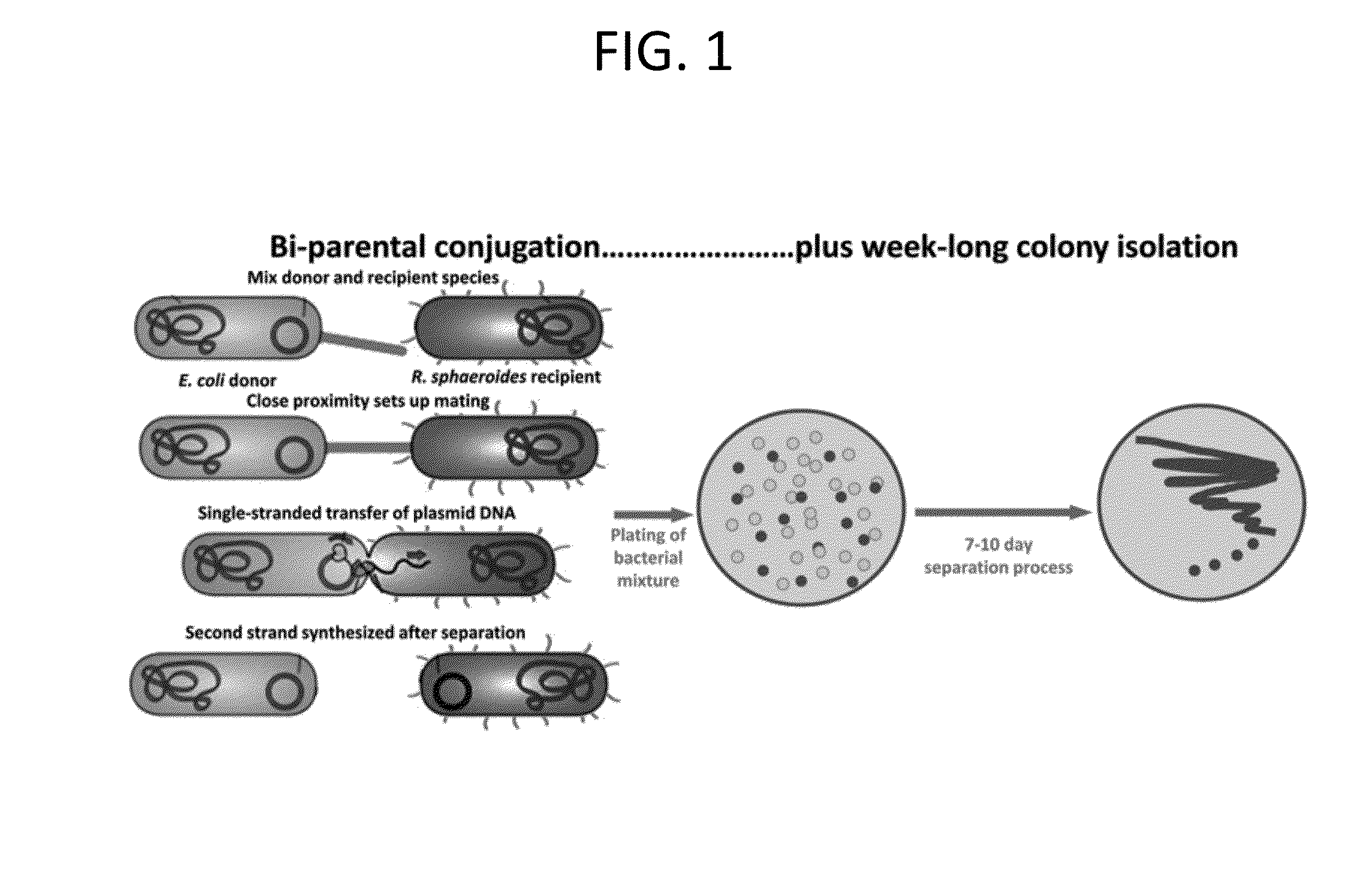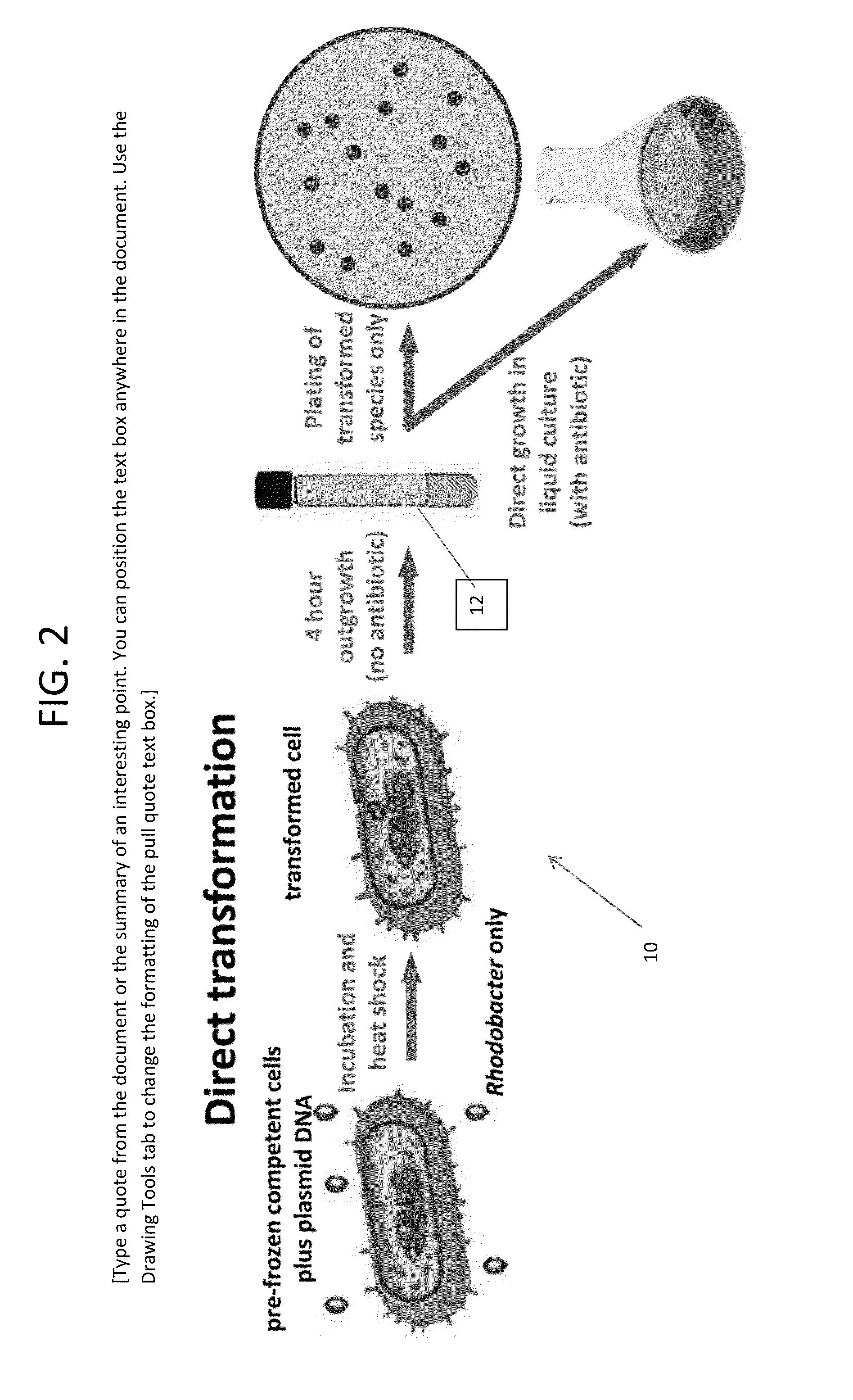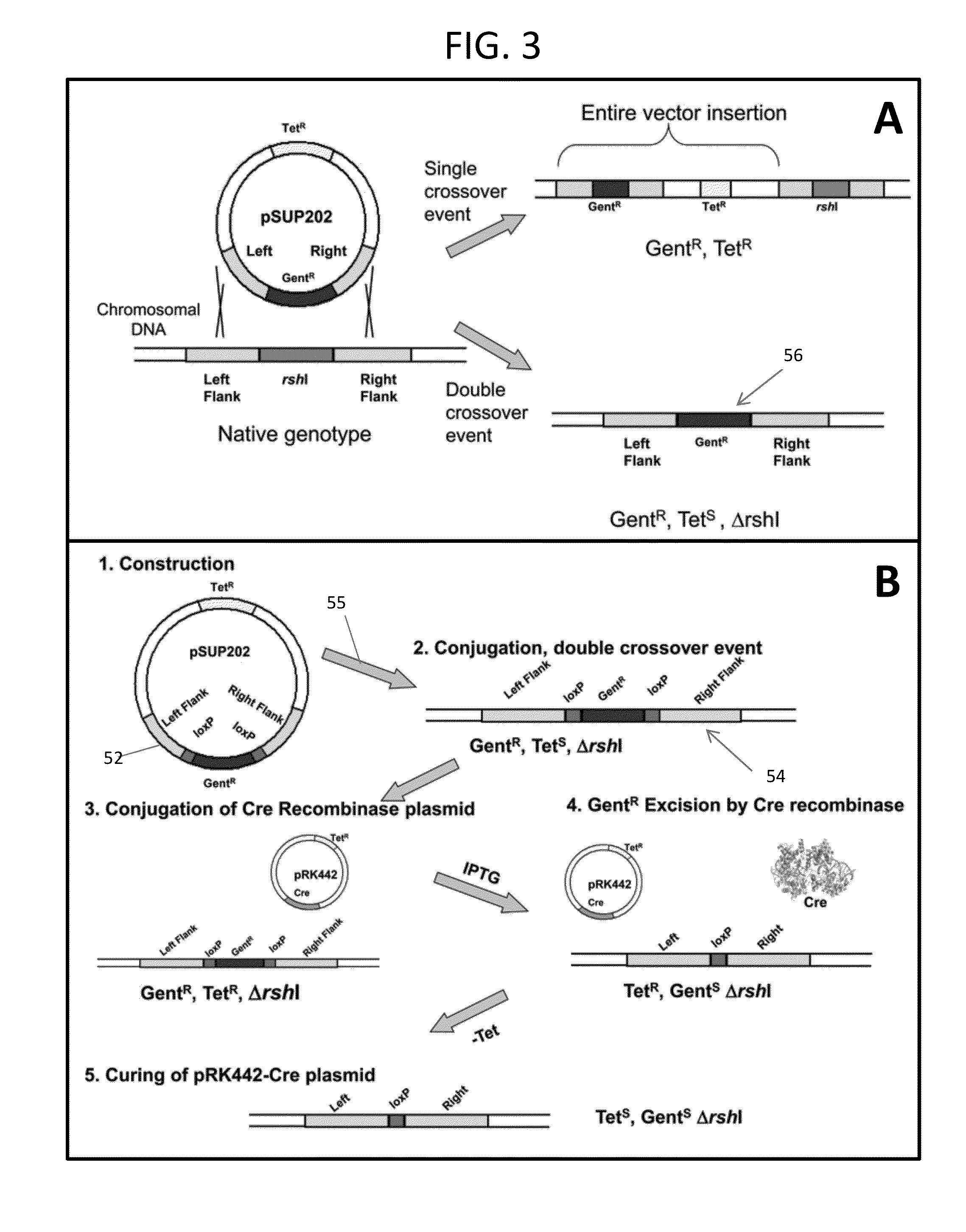Transformable rhodobacter strains, method for producing transformable rhodobacter strains
a technology of rhodobacter bacteria and transformable strains, which is applied in the direction of specific use bioreactors/fermenters, microorganisms, after-treatment of biomass, etc., can solve the problems of time-consuming conjugation, inability to adapt to strains, and low abundance of native cells or tissues, etc., to achieve efficient and cost-effective production of target moieties, facilitate the expression of heterologous genetic material, and improve the effect of target moi
- Summary
- Abstract
- Description
- Claims
- Application Information
AI Technical Summary
Benefits of technology
Problems solved by technology
Method used
Image
Examples
example 1
Construction of Deletion
Strain Detail
[0055]Engineered plasmid 52 is transferred to the R. sphaeroides host strain ΔΔ11 via conjugation, 55. Homologous recombination between the identical sequences on the plasmid with those that flank the rshI gene on the chromosome results in replacement of the target gene with the gentamicin resistance gene (FIG. 3A). Selection for growth on gentamicin was the first step in selecting candidate deletion strains, and their appearance indicated that deletion of the rshI gene was not lethal for the organism. The presence of the deletion in genomic DNA derived from candidate colonies was confirmed via PCR with diagnostic oligonucleotide primers.
[0056]The inventors targeted the rshI gene for deletion. This gene encodes a Type II restriction enzyme that cleaves at the recognition sequence CGATCG. This sequence is found in multiple occurrences in the expression vector that are used for the Rhodobacter membrane protein expression system and can occur freque...
example 2
[0067]Cells were grown in rich medium (GYCC) and were harvested in early- to mid-log phase. The cells were washed with ice-cold 0.5 M Tris-Cl (pH 7.2), then were re-suspended in ice-cold 0.1 M Tris (pH 7.2) / 0.2 M CaCl2 to a final concentration of ˜8×1010 cells / ml. An 0.2 ml aliquot was transferred to a tube on ice and was mixed with 1 μg of plasmid DNA, followed by 0.2 ml 40% PEG6000 in 0.1 M Tris (pH 7.2). Tubes that contained cells but no DNA served as negative controls. The tubes were kept on ice for 10 min, then were heat-shocked for 2 min at 35° C. GYCC medium (1 ml) was then added and the tubes were incubated at 35° C. for 20 min, then an additional 3 ml of GYCC was added and the cells were cultured at 35° C. for an outgrowth period of between about 4 and 26 hours.
[0068]Cells were then pelleted and were plated to GYCC agar containing tetracycline (1 μg / ml) to select for the presence of the plasmid. Plates were monitored for the appearance of transformed ...
example 3
Electroporetic Transformation
[0071]Cells were grown in GYCC medium and harvested in early- to mid-log phase. The cell pellet was washed three times in successively smaller volumes of ice-cold distilled, deionized H2O and finally in ice-cold 10 percent glycerol. The final pellet was resuspended in ice-cold 10 percent glycerol to a concentration of ˜5-8×1010 cells / ml. For electroporation, a 40 μl aliquot of cells was mixed in a microfuge tube on ice with 100 ng plasmid DNA. Tubes that contained cells but no DNA served as controls; an additional negative control comprised a cell / DNA mixture that received no pulse. The mixture was transferred to a chilled 2-mm electroporation cuvette and subjected to one electrical pulse at the following settings: 2500 V, 25 μF, 200 ohm. The time constant for the pulse was approximately 10 msec. The cuvette was returned immediately to ice and 1 ml GYCC medium was added. The cells were then transferred to a culture tube and were incubated at 35° C. with ...
PUM
| Property | Measurement | Unit |
|---|---|---|
| pH | aaaaa | aaaaa |
| time constant | aaaaa | aaaaa |
| stability | aaaaa | aaaaa |
Abstract
Description
Claims
Application Information
 Login to View More
Login to View More - R&D
- Intellectual Property
- Life Sciences
- Materials
- Tech Scout
- Unparalleled Data Quality
- Higher Quality Content
- 60% Fewer Hallucinations
Browse by: Latest US Patents, China's latest patents, Technical Efficacy Thesaurus, Application Domain, Technology Topic, Popular Technical Reports.
© 2025 PatSnap. All rights reserved.Legal|Privacy policy|Modern Slavery Act Transparency Statement|Sitemap|About US| Contact US: help@patsnap.com



